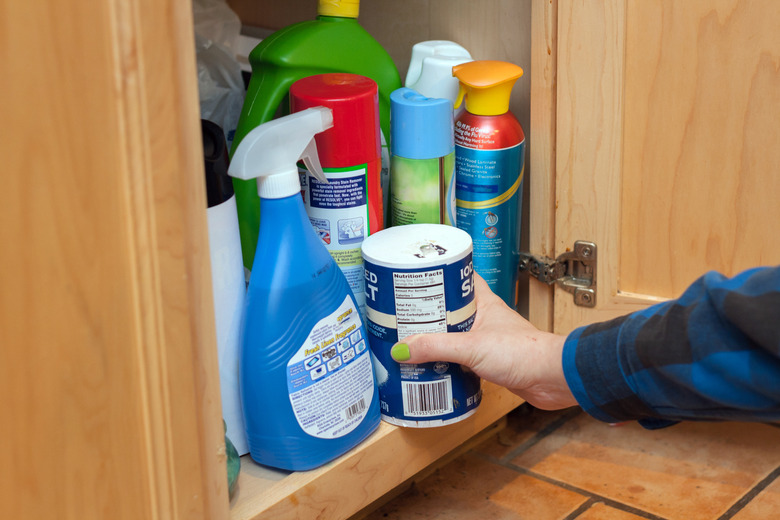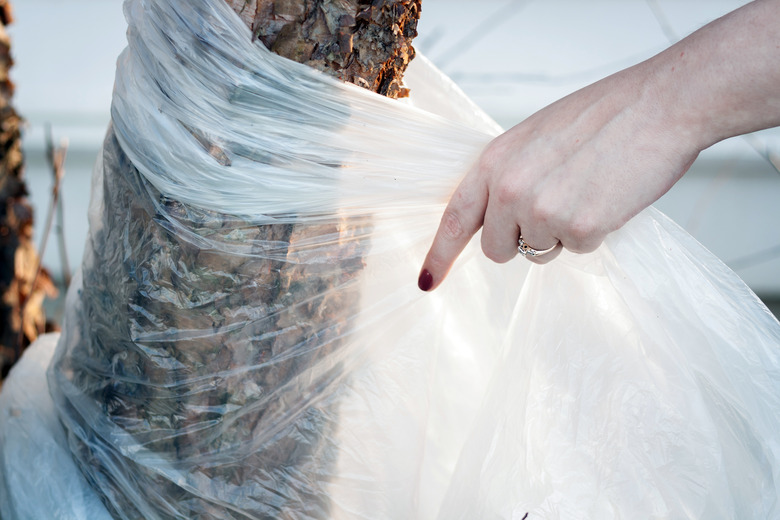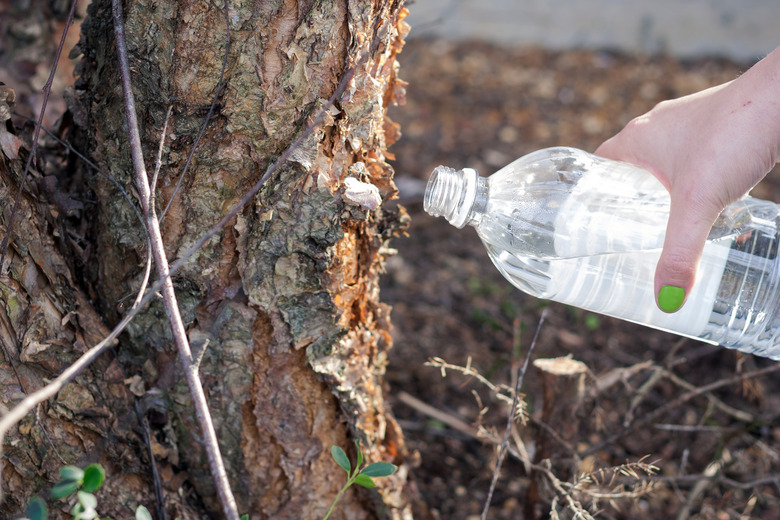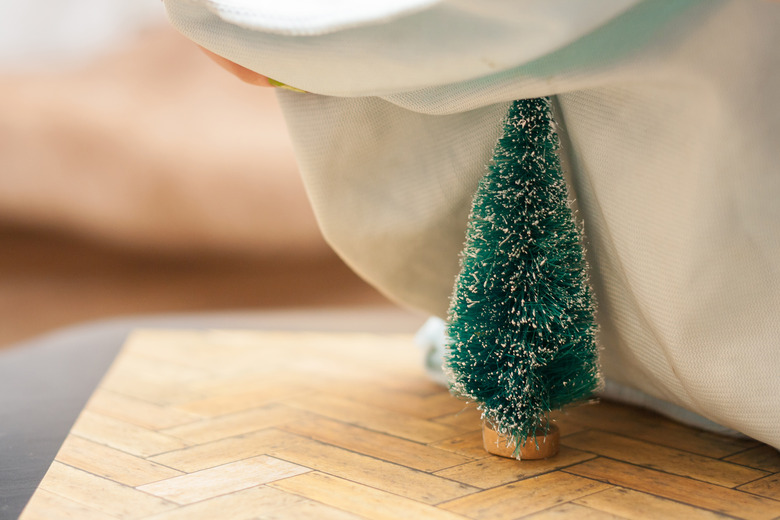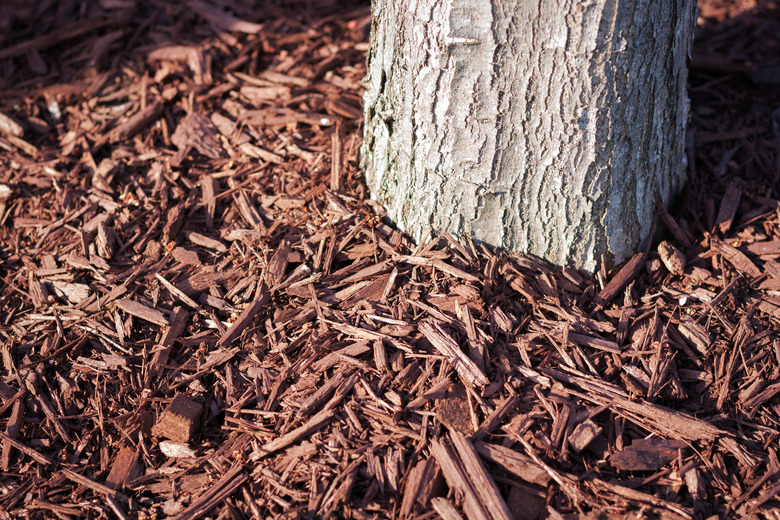Homemade Tree Killer
Garden centers sell a variety of herbicides for killing trees, but none of these options work if you prefer an organic gardening approach. Fortunately, you have many ingredients available in your pantry and garden shed to make homemade tree killers. While you can simply cut down a tree to get rid of it, the tree roots remain active and produce root suckers, so the tree continues to grow if you don't get rid of them too.
Salt
Salt
If you've ever observed how quickly salt can make a wet, icy sidewalk dry, then you know salt's power as a desiccant. When used as a tree killer, salt absorbs the moisture in the tree so it turns brown and eventually dies. Salt works well as a desiccant when it's diluted in water, meaning you could pour saltwater around the root zone, but this increases the soil salinity, making the area unsuitable for new plants. Instead, drill several holes in the top of a tree stump or at a downward angle in the sides of the trunk using a 1/2" drill with an auxiliary handle and wood auger bit. Using a funnel, pour rock salt in to fill the holes. Cover the holes with sheet plastic or tape, and wait a few weeks for the tree to die. Repeat application as needed, keeping the holes packed full.
Vinegar
Vinegar
Household vinegar burns plant leaves and can also burn the living tissue inside a tree. White vinegar contains 5 percent acetic acid compared to 20 percent acetic acid from horticultural vinegar. Topical application of white vinegar to the leaves alone is not enough to completely kill a tree, but killing the leaves prevents the tree from photosynthesizing and transferring carbohydrates to the roots, which can slowly kill it. To speed up the process, you need a way to get the vinegar to the roots without drastically increasing the acidity in the soil for future plants. Drill holes in the trunk or top of the stump and fill them with the vinegar. Check back frequently to add more as the tree drinks the vinegar. Large trees die within a month, but will die even faster when you use vinegar along with the salt treatment.
Cover
Cover
A tree's leaves soak up the sun, turning that energy into carbohydrates to feed the tree in a process called photosynthesis. If sunlight cannot reach the tree, photosynthesis cannot occur and the tree fails to thrive — the same thing that would happen if you plant a tree that needs full sun in the shade. To block out sunlight and kill the tree, drape a tarp or thick drop cloth over it. You can tie the cloth around the trunk just beneath the canopy, or cover the trunk as well and stake the cover to the ground. This option is not practical for very large trees, but can slowly kill small to medium-size trees.
Mulch
Mulch
Proper mulch application around trees can boost their growth by retaining moisture, cooling roots and providing organic matter to the soil. Mulch should be spread no more than about 3 inches thick so oxygen can reach the roots, and with a few inches around the trunk free of mulch to prevent infestation and rot. In the same way that the right amount of mulch can be advantageous, too much mulch applied improperly can slowly kill a tree. To use mulch as a tree killer, spread it in a layer about 8 to 10 inches thick, built up in a mound tight against the trunk. This invites insects and varmints that feast on the tree trunk, encourages retention of too much moisture and promotes shallow roots that make the tree unstable. This completely nontoxic method can take several months or longer to kill a tree completely.
References
- University of Arkansas Extension: Ten Easy Ways to Kill a Tree (And How to Avoid Them)
- University of Vermont Extension: Salt Damage to Plants
- The Garden Professors: Vinegar: A Garden Miracle
- Southern Living: Don't Mulch Too Much
- Cornell University New York State Integrated Pest Management: What Do Plants Need to Grow?
